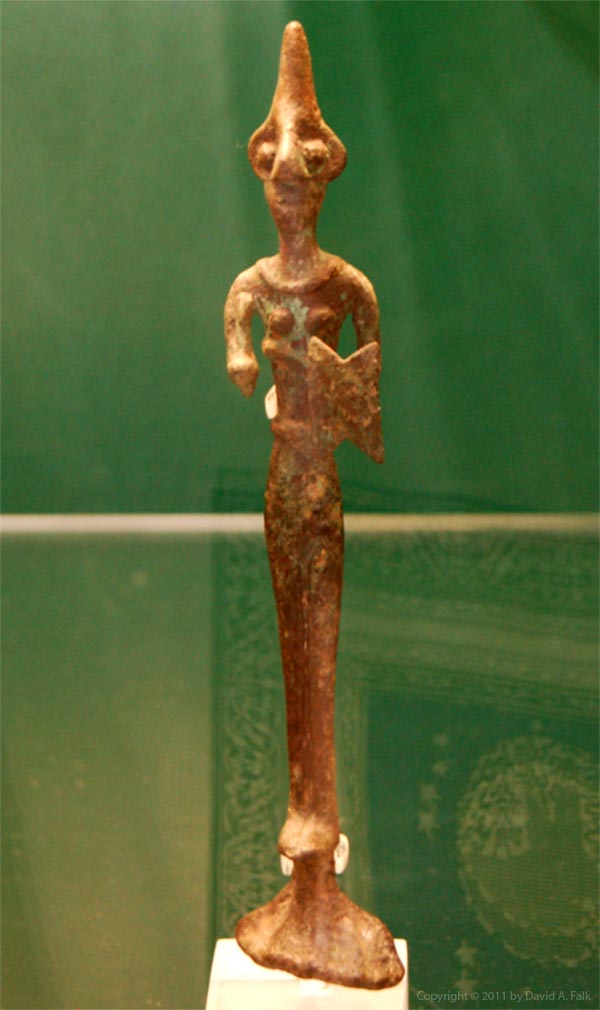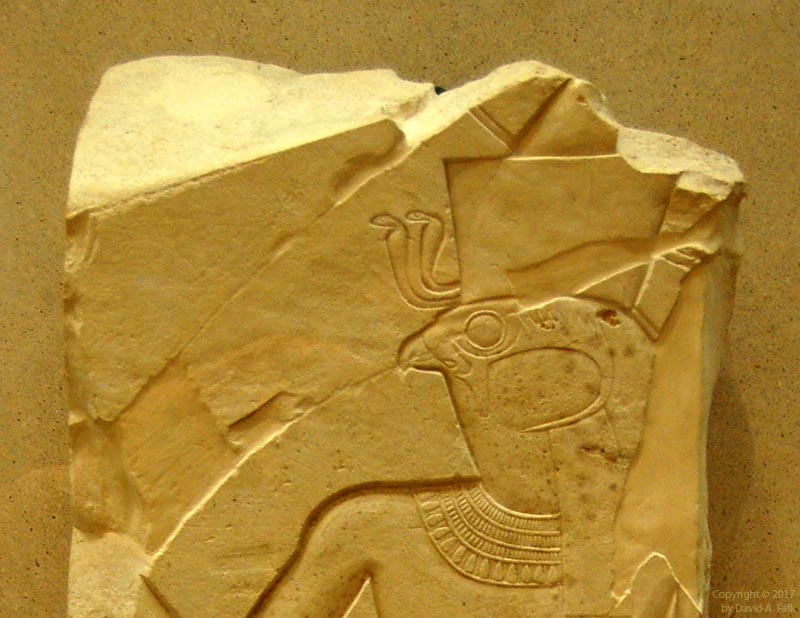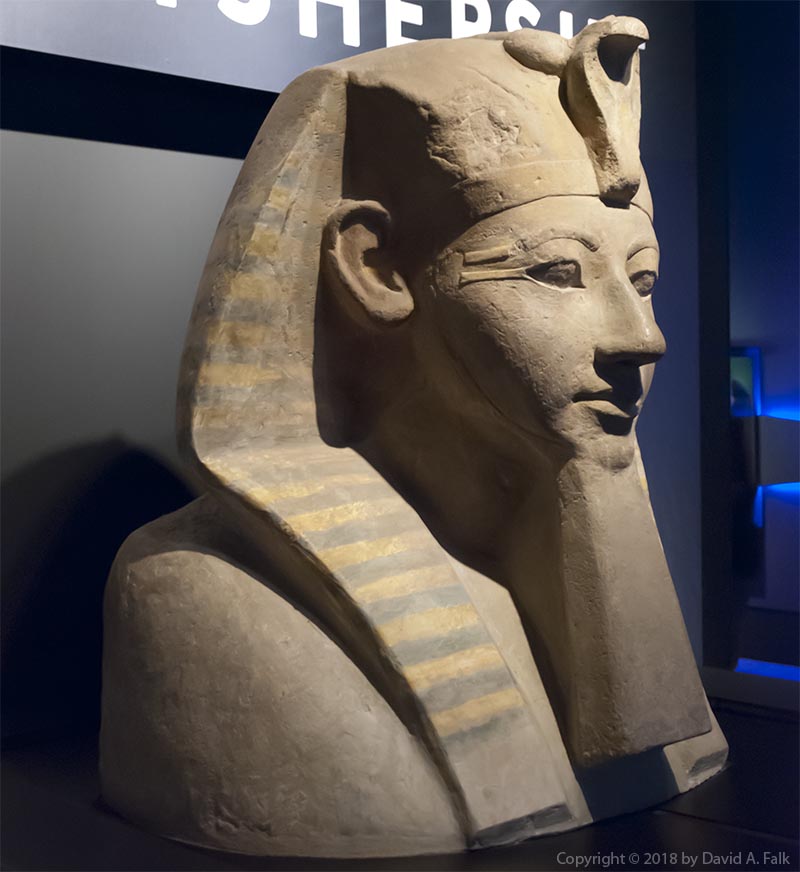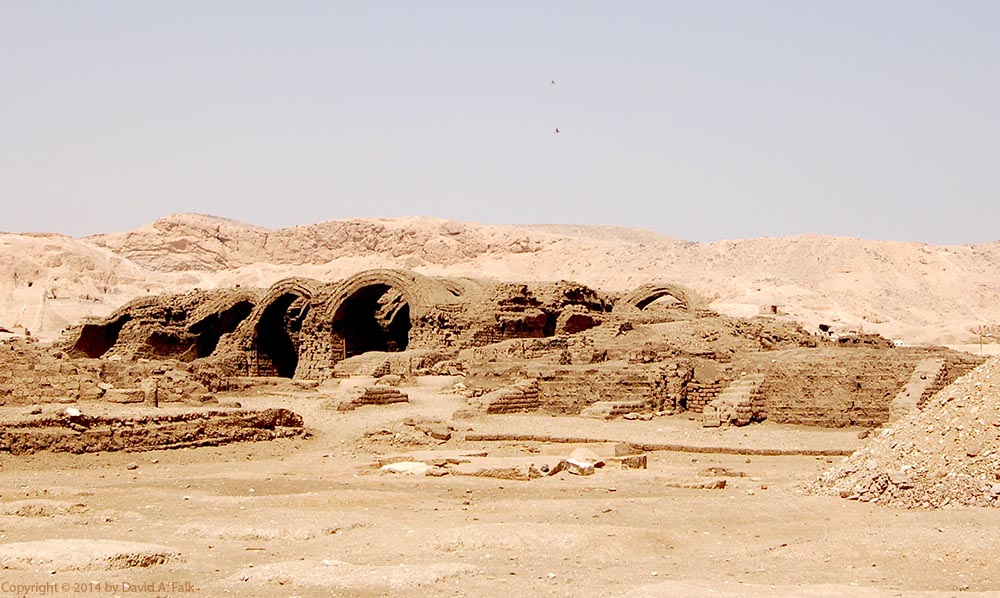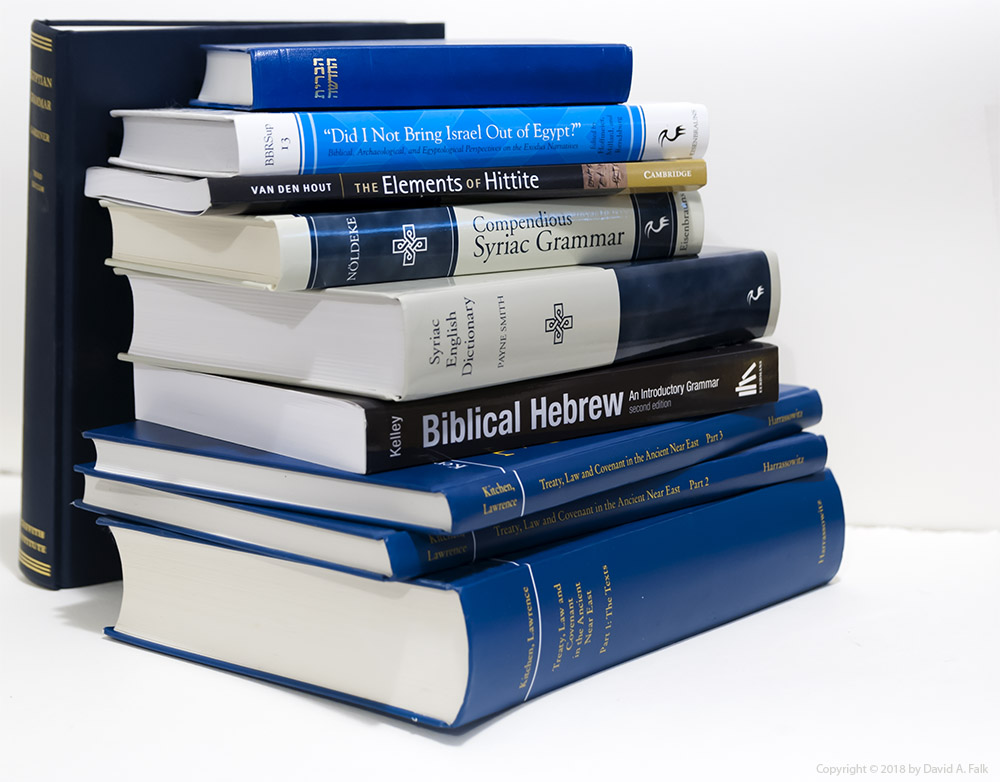A panorama photograph of the Peristyle Hall at Medinet Habu. Medinet Habu was initially built as the mortuary temple for Ramesses III, but later on became the main administrative center for West Thebes during the 20th and 21st dynasties. Unlike many of the mortuary temples in West Thebes, Medinet Habu is largely intact and even much of the paint on the reliefs remains preserved. Ramesses III reigned for 31 years and was assassinated in a conspiracy by his royal harem (Queen Tiye) to put a minor son, Pentawere, on the throne over the crown prince Ramesses IV.
Tag: egypt
Dreams and their Interpretation
The Egyptians believed that dreams could foretell the future. And as such the interpretation of dreams played an important part of ancient Egyptian culture. In fact, the interpretation of dream persists among modern Egyptians today.
The Dream Book
Two so-called “dream books” have survived from ancient Egypt. Perhaps the most interesting is Papyrus Chester Beatty III, a fragmentary papyrus written in hieratic. This papyrus is a catalog of dreams and their interpretations.
The format of the interpretations is quite formulaic. All the dreams are predicated upon you appearing your dream. The dream is then summarized. The book then gives a one-word appraisal of the dream, either “good” or “bad.” And then the book predicts what’s going to happen to you.
A couple of examples from the dream book are as follows: “[if a man sees himself in a dream] seeing the god who is above–good; it means much food.” Or, “[…] seeing himself [in] mourning–good; the increase of his possessions.” Or, “[…] looking in a deep well–bad; his being put into prison.” Or, “[…] seeing an ostrich–bad; harm befalling him.”
The content of these dreams were not limited by propriety or societal mores. Dream books provided interpretations for dreams involving drinking wine, engorged genitals, and copulating with one’s mother. Also, some of these dreams could be quite cringe worthy, such as, drinking one’s own urine or blood, or copulating with a pig. Counter-intuitively, the dream books considered some of these noxious dreams to have good outcomes.
Joseph and Dream Interpretation
One cannot refer to dream books without being reminded of the dream interpretations found in the Bible, most notably those interpretations done by Joseph. Joseph was sent to prison where he interpreted the dreams of his fellow prisoners. Joseph interpreted the dream of a cupbearer:
So the chief cupbearer told his dream to Joseph, and said to him, “In my dream, behold, there was a vine in front of me; and on the vine were three branches. And as it was budding, its blossoms came out, and its clusters produced ripe grapes. Now Pharaoh’s cup was in my hand; so I took the grapes and squeezed them into Pharaoh’s cup, and I put the cup into Pharaoh’s hand.” Then Joseph said to him, “This is the interpretation of it: the three branches are three days; within three more days Pharaoh will lift up your head and restore you to your office; and you will put Pharaoh’s cup into his hand according to your former custom when you were his cupbearer. [Gen 40:9-13]
The Chester Beatty papyrus has a similar dream. “[…] seeing himself with one greater than he–good; it means his promotion by his (own) agency.” The cupbearer saw himself serving the king, so a promotion or restoration of position was the expected interpretation.
Pharaoh’s Dream and the Dream Book
The cupbearer remembered Joseph as an interpreter of dreams and suggested to the king that Joseph could interpret his dream. Joseph interpreted the king’s dream as foretelling seven years of plenty followed by seven years of famine. The king described his dream as follows:
Now it happened at the end of two full years that Pharaoh had a dream, and behold, he was standing by the Nile. And lo, from the Nile there came up seven cows, sleek and fat; and they grazed in the marsh grass. Then behold, seven other cows came up after them from the Nile, ugly and gaunt, and they stood by the other cows on the bank of the Nile. The ugly and gaunt cows ate up the seven sleek and fat cows. Then Pharaoh awoke. He fell asleep and dreamed a second time; and behold, seven ears of grain came up on a single stalk, plump and good. Then behold, seven ears, thin and scorched by the east wind, sprouted up after them. The thin ears swallowed up the seven plump and full ears. Then Pharaoh awoke, and behold, it was a dream. [Gen 41:1-8]
The Chester Beatty papyrus has some favorable interpretations that reference bovines. “[…] seeing a dead ox–good; it means seeing [the demise?] of his enemies.” “[…] killing an ox–good; killing his enemies.” “[…] carving up an ox with his (own) hand–good; killing his (own) adversary.” And, “[…] bringing in the cattle–good; the assembling of people for him by his god.”
But there are also some unfavorable interpretations. “[…] feeding cattle–bad; it means roaming the earth.”
Grain is also referenced. “[…] seeing barley and spelt [given?] to those yonder–good; it means the protection of him by his god.” “[…] measuring barley–bad; it means the arising of words with him.”
Likewise, dreams provided predictions for harvests. “[…] seeing a large cat–good; it means a large harvest will come to him.”
What can we make of Dream Interpretations?
Although the Chester Beatty papyrus is far from complete, we can see that the interpretation of dreams was codified knowledge. A lot of questions remain regarding how the ancient Egyptians interpreted dreams. How did the Egyptians interpret more complex dreams? How extensive were these dream books? Did the Egyptians standardize dream books? How many editions were in circulation? Fortunately, the Chester Beatty papyrus gives us a tantalizing start to this fascinating subject.
Ancient Egyptian Cats
The role of ancient Egyptian cats is quite fascinating. Claudio Ottoni wrote an interesting article this week on the domestication of one of humanity’s favorite companions. Ottoni suggests that the relationship between cats and humans began as a commensal relationship established during the early development of agriculture.
During the neolithic period, humans were domesticating grains in Turkey. As humans gathered these early grains, the harvests attracted rodents looking for an easy meal. The African wildcat (Felix silvesterus lybica) started to encroach upon human settlements. And humans discovered that their new partners had added benefits beyond vermin control.
Despite the commensal relationship cats had formed with humans everywhere, the Egyptians would complete the domestication of the modern house cat (Felix silvesterus catus). While the African wildcat was still hanging out on the fringes of early European settlements, the Egyptians had already invited cats into their homes as pets.
However, one specific aspect to Egyptian cats that may seem strange to us is that the Egyptians trained their felines. You only thought cats trained their humans, didn’t you? The Egyptians trained these felines to hunt. For sport, the Egyptians used trained cats to flush out game while the hunters hurled throwing sticks (see painting above). Early cats were the Egyptian equivalent to the golden retriever.
Atenism, was it really monotheistic?
Aten living daily content in the sky, Your offspring, your august son, Sole one of Re; The Son of Re does not cease to extol his beauty, Neferkheprure, Sole-one-of-Re. I am your son who serves you, who exalts your name. Lichtheim, Literature, 2:91-92.The theological implication of this is important. James Hoffmeier summarizes this situation as “the anointing of the king to make him the Son of God.” Kingship in Atenism is the manifestation of the incarnate Aten. The reference to a unique son speaks to a common theme in ancient Near Eastern literature, which is the idea of an offspring that will carry the legacy of the parent. This motif appears in the inheritance laws of ancient Mesopotamia. It also is found in early Israelite thought with the promise of a son to Abraham even though he already had a son in Ishmael. In ancient Egypt, inheritance often was associated with the passing on of a title or occupation as well as property. Atenism differed from classical Egyptian thought in the belief of creation. Traditional Egyptian belief focused upon creation myth as foundational. But Atenism disregarded physical creation altogether while maintaining the Aten as creator. Akhenaten extolled the Aten as the “creator of all, who makes them live, Great Falcon, bright of plume; a beetle who raised himself, he who was self-created, he who was never born.” Atenism accepted the idea of immanence in the act of continuous creation. The substance and breath of the Aten made every living being alive. “You are One, yet a million lives are in you, To make them live <you give> the breath of life to their noses.” Aten was bidirectionally eternal. That is the Aten was in eternity past the same as he is today and going forward will remain the same. Thus, the answer to the question of origins always centered upon manifestations of the Aten. This sort of divinity was not quite henotheism in the classical sense nor was it any kind of monotheism per se. Because Atenism popularized “the One and the Many” theology, Akhenaten’s religious reforms transformed Egyptian religion from a plurality of gods to one deity radiating from a single source incorporating the substance of all other gods. Atenism was the ultimate deconstruction of deity that Amenhotep III had first attempted, carving out of Egyptian religion a monolatrous pantheism. The preceding preview was an edited extract taken from a book chapter recently submitted to Oxford University Press.
The Tower Migdol
Baal-Zephon, Lord of the North
To Amūn of the temple of the gods; to the Ennead that is in Pi-Ptaḥ; to Baˁalim, to Ḳadesh, and to Anyt; (to) Baˁal Zephon (bˁr-ḏȜpn), to Sopd. Papyrus Sallier IV (vs. 1:6)The Hyksos who worshipped the storm god associated this god with the Egyptian storm god, Seth. The Egyptians continued to use this association after the Hyksos left Egypt. Given that the author of Papyrus Sallier IV wrote the toponym Baˁal-Zephon with the Seth character; Baal in this toponym may be a reference to Seth. The second element of the toponym, the word zephon, means “north” in Semitic languages. However, Zephon by itself also appears as a toponym in Amarna Letter 274, most likely as a name of a Levantine city. Thus, it is unclear whether zephon in Baal-Zephon refers to a direction, yielding “Baal of the North,” or a place, “Baal of (the city) Zephon.”
Pi-Hahiroth, “Estate of the Temple of the Wadjet” by any other name
The (Sea of) Reeds (pȜ–ṯwfy) comes to papyrus reeds and the (Waters-of)-Horus (pȜ–ḥr) to rushes. Twigs of the orchards and wreaths of the vine-yards [ … ] birds from the Cataract region. It leans upon [ … ] the Sea (pȜ ym) with bg-fish and bȗrἰ-fish, and even their hinterlands provide it. The Great-of-Victories youths are in festive attire every day; sweet moringa-oil is upon their heads having hair freshly braided. They stand beside their doors. Their hands bowed down with foliage and greenery of Pi-Hahirot (pr-ḥwt-ḥrt) and flax of the Waters-of-Horus. The day that one enters (Pi)ramesses (wsr-mȜˁ-rˁ stp-n-rˁ) l.p.h., Montu-of-the-Two-Lands. Papyrus Anastasis III (2:11-3:4)This document, dated to the third year of Ramesses II’s successor, Merneptah (ca. 1222-1212 BCE), locates Pi-Hahiroth on the way from the Sea of Reeds (pȜ ṯwfy) towards Piramesses. It appears as though Pi-Hahiroth was probably on the south coast of the Sea of Reeds in a marshy area on the edge of the desert. While no one knows the exact location of Pi-Hahiroth, it was probably is in close proximity to Migdol and Baal Zephon. Egyptologists have long struggled with the meaning of the pr-ḥwt-ḥrt toponym. And early Egyptologists suggested that it might mean “House of (the goddess) Hathor,” assuming that the word ḥrt was an unusual or mistaken spelling of Hathor. The toponym follows Egyptian convention beginning with the hieroglyphic pr-ḥwt, “estate of the temple” or “house of the precinct.” It ends with the goddess character indicating that the final element, ḥrt, is theophoric. William F. Albright suggested that it might mean “the mouth of the canals,” which he suggested was perhaps a Semitic etymology of the Egyptian Pi-Ḥ-r-t, yet this creative solution ultimately did not solve the problem of the theophoric name. He suggested that Heret was the name of a Semitic goddess. The problem is that, even though the name could mean “Estate of the Temple of (the goddess) Heret,” no such goddess is known. Therefore, Albright’s proposal was not a tenable solution to the problem. I believe that ḥrt is an abbreviated spelling of ḥry(t)-tp, “the one who is on top.” The term ḥry(t)-tp is one of the epithets of the Uraeus serpent goddess, Wadjet, and therefore, the name would mean, “Estate of the goddess who is on top (=Wadjet).” This solution retains the theophoric aspects of the toponym and is consistent with known examples of the Wadjet epithet (e.g. Karnak Rhetorical Stela [KRI V 89.10]).
Egypt: Time of the Pharaohs (Reviewed)
When one lives in British Columbia, few opportunities exist to view Egyptian antiquities first hand. Egypt: Time of the Pharaohs is a traveling exhibit currently on display at the Royal BC Museum in beautiful Victoria. The collection is curated jointly from the University of Aberdeen and the Roemer- and Pelizaeus-Museum Hildesheim.
The greatest strength of this collection is its sheer diversity of objects. The exhibition has a large selection items dating from the pre-dynastic period until the Roman period. The time period covered is wide in scope, and the collection covers all walks of life. Items included are objects from everyday life, e.g. beer jugs, to luxury goods from the tombs of great kings. On the basis of the items alone, this exhibit is worth the modest price of admission.
This is not to say, however, that the exhibit does not have some shortcomings. It definitely does. The descriptions that accompany the artifacts are often 20 years out of date and many contain glaring factual errors. A couple of examples include the description of a “woman miller” that clearly is male and a “stool” that is obviously a chair with the back broken off. The description of a 21st dynasty “yellow coffin” cover states that the yellow reflected the symbolism of the sun when David Singleton in 2003 proved that these coffins were originally painted white and the varnish only yellowed with age.
Another issue is the dim lighting used in the exhibit. Quite frankly, the lighting is darker than what other exhibits of this kind employ. Many objects of this kind do not require lighting this dark, particularly artifacts that baked in the harsh Egyptian sun for over 3,000 years. The darkest areas of the exhibit house objects made of granite or bronze, non-fugitive materials. Some of the lighting choices were a bit silly.
The other shortcoming revolves around the Royal BC Museum’s decision to exclude local Egyptologists from actively participating in the exhibit. The museum would not dream of a first nations exhibit without the participation of Canadian anthropologists and archaeologists. Yet, the museum shut out local Egyptologists who are few but active in the scholarly community. This failure is a lost opportunity to leverage local talent.
Overall, the Egypt: Time of the Pharaohs is a rich and worthwhile exhibit to see. And it is no doubt one of the best exhibits of Egyptian artifacts that has ever come to Canada. Egypt: Time of the Pharaohs runs until December 31, 2018.
Pithom, “House of Atum”
The Best Ancient Egyptian Dictionaries
As an Egyptologist who has taught at a university, teaching the ancient Egyptian language is one of my duties… and great pleasures. And sooner or later, my students will need one or more dictionaries in order to continue studying Egyptian at a more advanced level.
Not All Dictionaries are Created Equal
One my specializations as an Egyptologist is lexicography. Lexicography is the study of the meaning of words. It is a field of study that has been much neglected over the past century but is imperative to our understanding of the Egyptian language.
As one grasps the issues involved in lexicography, one soon discovers that not all dictionaries are created equally. You will look at the definition in a dictionary and say to yourself, “Well, it sort of means that but not really.” Or you’ll even find that some definitions were originally placeholders that are accepted as part of the academic tradition.
For example, tἰšpss is frequently translated as “cinnamon” based upon how Breasted translated the word in AD 1906. He reasoned that the “merely hypothetical” translation “cinnamon” would eventually be corrected (Schoff 1920, 263). Within a couple generations, the definition entered into the academic tradition and became an accepted translation (Lesko, 2:201; Wilson 1124). But the problem remained–cinnamon trees do not grow in Africa.
And some dictionaries are so woefully flawed or out of date as to be absolutely useless, e.g., E. A. Wallis Budge, An Egyptian Hieroglyphic Dictionary (1920).
Best Dictionaries for Learning Egyptian
More often, students will resort to resources including dictionaries that they find online, e.g., Mark Vygus’ Middle Egyptian Dictionary (2002-2018). These “efforts” are not really dictionaries but word lists that have been extracted from someone else’s work/database.
For example, Vygus’ dictionary was extracted from Luca Brigatti’s Hieroword software. Paul Dickson’s Dictionary of Middle Egyptian (2006) in turn depends largely upon Vygus’ work. Neither Dickson, Vygus, nor Brigatti have a publication record in Egyptological journals. And as far as I can tell, they have no credentials in the field so their unvetted, low quality word lists are best avoided. What terrifies me is that I’ve seen these word lists used in so-called scholarly works (e.g. Petrovich, 2016).
So here is my list of the best dictionaries for learning ancient Egyptian annotated with my opinion as to each work’s merits and problems.
Raymond A. Faulkner, A Concise Dictionary of Middle Egyptian (1962).
This is the “go to” dictionary for students learning Middle Egyptian, and rightly so despite some errors and deficiencies. Faulkner was a first rate scholar and extremely proficient at lexicography, and he brings that experience into this book. It has some of the best definitions with citations that are found in any dictionary published to date.
The dictionary does have some problems that the student should be aware of. It is concise so it is shorter than other dictionaries, and the student may need to consult other works for less common vocabulary. Also, it is published in Faulkner’s handwriting, which can be difficult for the beginning student to read. The dictionary lacks street credibility in the academic community as a reference work, unfairly so in my honest opinion.
Overall, the work is inexpensive, reasonably accurate, and written in English. Few dictionaries on this list have all three. It is the single best dictionary for overall quality.
Adolf Erman and Hermann Grapow, Wörterbuch der aegyptischen Sprache (1926-1963)
The Wörterbuch, as it is known by, is the big standard reference dictionary of Egyptology. It comes in twelve volumes and is highly respected as the dictionary in the Egyptological community. The advantage of it is that it is exhaustive.
The disadvantages of it are plentiful. It is written in German, which is an impediment for most native English speakers. The definitions are not as well-considered as they should be–an embarrassing fact that Gardiner (1948) drew attention to. And for a work that is so highly regarded, it is poorly cited. An attempt was made to add citations with a supplement called Die Belegstellen, but that effort was unfortunately cut short.
No work of Egyptology would be consider seriously without consulting the Wörterbuch. In my opinion this dictionary is very long in the tooth and should be used as a starting point pending further lexicographical work. I would no longer consider the Wörterbuch the final authority for a definition.
Rainer Hannig, Großes Handwörterbuch Ägyptisch–Deutsch (2800-950 v. Chr.) (2009)
This is Hannig’s attempt to modernize and create an abridged version of the Wörterbuch. Lofty goals to say the least. The advantage of this work is that it is only one volume, and parts of it are an improvement over the Wörterbuch.
But there are some disadvantages. Like the Wörterbuch it is written in German. And many entries are little improved over the Wörterbuch. When the work was first published, the work was criticized for its lack of citations.
Hannig responded to these criticisms by writing the Ägyptisches Wörterbuch (2003-2006), which was intended to be comprehensive. Unfortunately, his citations are repetitive and include a lot of redundant entries referencing too many translations of the same source texts. What his work really needed was greater diversity of original source materials.
Overall, Hannig’s dictionary is expensive but compact. The quality of the work is an incremental improvement over the Wörterbuch.
Leonard H. Lesko, ed. A Dictionary of Late Egyptian, 2nd Ed. (2002)
Sometimes the best dictionary is the only one. This dictionary is really a word list that was compiled by Lesko’s graduate students. The 2nd edition does have more citations than the first, but it still lacks the scholarly reflection that you would find in Faulkner.
Nevertheless, many definitions were based upon translations done by expert Egyptologists. As such the work is not as inaccurate as one might fear from a compiled work. This dictionary, however, could still be improved upon with more proper word studies.
However, if you are studying Late Egyptian, you must have this dictionary. No other will suffice.
Penelope Wilson, A Ptolemaic Lexicon: A Lexicographical Study of Texts in the Temple of Edfu (1997)
This is the definitive lexicon on Ptolemaic period Egyptian. The scholarship is excellent and thorough. The work is written in English but is only for advanced students. The only problem is that it is next to impossible to get your hands on a copy as it was published as a fascicle of the series Orientalia Lovaniensia Analecta and not currently in print.
Walter E. Crum, A Coptic Dictionary compiled with the help of many scholars (1939)
There are two excellent dictionaries that deal with Coptic, the last phase of the Egyptian language. Fortunately, both are written in English, reasonably priced, and available as reprints. The dictionary by Crum is the standard dictionary for Coptic. Crum’s dictionary is an overall sound piece of scholarship.
Jaroslav Černý, Coptic Etymological Dictionary (1976)
Černý fills in an important gap by tying the Coptic words found in Crum to related words and phrases found in Greek and older forms of Egyptian. The scholarship is terrific and this work is essential for those doing lexicography that includes Coptic.

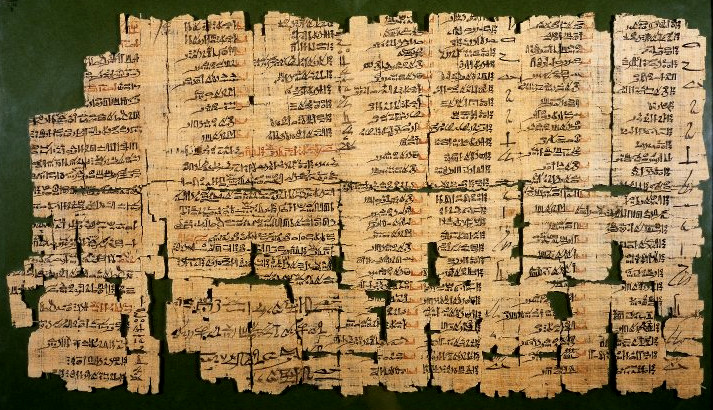
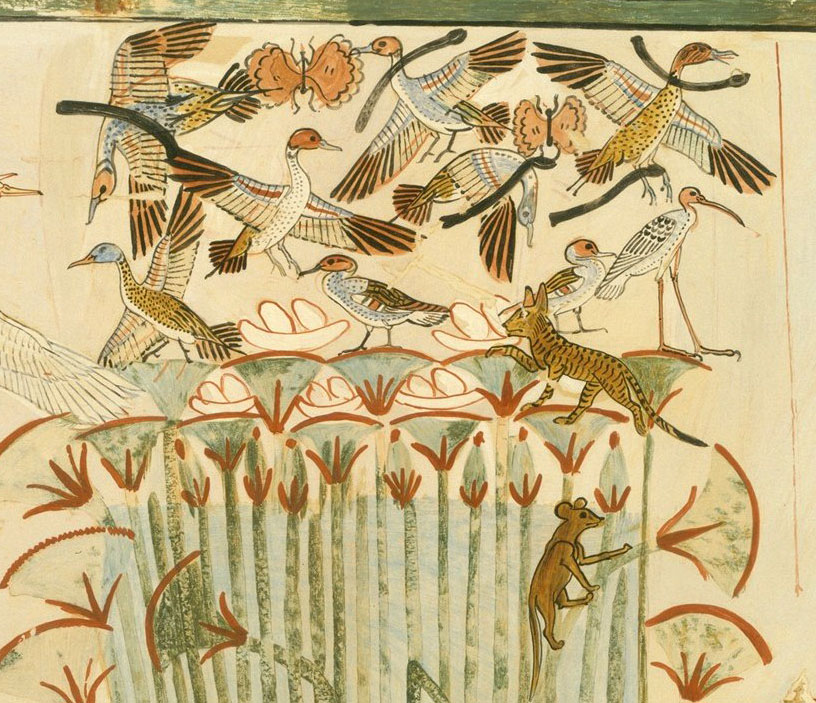
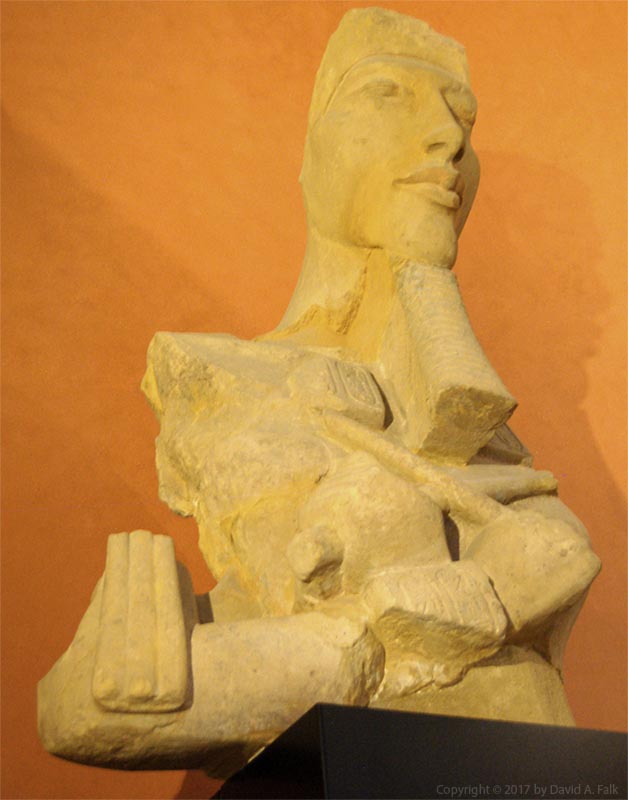
![Seti I relief from Karnak Temple (Illustration from A. H. Gardiner, JEA 6 [1920], pl. 11), with the Migdol.](http://www.egyptandthebible.com/wp-content/uploads/other_photos/migdol.png)
